If you’re considering adding a Great Pyrenees to your family, you’re probably wondering if this majestic breed is the right fit for you. With their fluffy white coats and regal bearing, Great Pyrenees are certainly eye-catching, but they also have some unique characteristics you’ll want to consider before making a decision. So what are the pros and cons of a Great Pyrenees worth noting?
Great Pyrenees’ biggest pros are their loyalty, protectiveness, intelligence, and beauty. They are gentle giants with calm and patient personalities and are good with children. However, Great Pyrs also have some cons: they can be stubborn, need a lot of space, and are highly energetic.
The Great Pyrenees, also known as the Pyrenean Mountain Dog, was initially bred as a livestock guardian to protect flocks of sheep from predators such as wolves and bears in the Pyrenees Mountains, which form a natural border between France and Spain.
Today, Great Pyrenees are still used as livestock guardians in some parts of the world, but they are also popular as companion animals due to their gentle and loving nature.
As the owner of a large breed livestock guarding dog, I’ll let you know a few advantages and disadvantages of owning a large breed that only an owner will know.
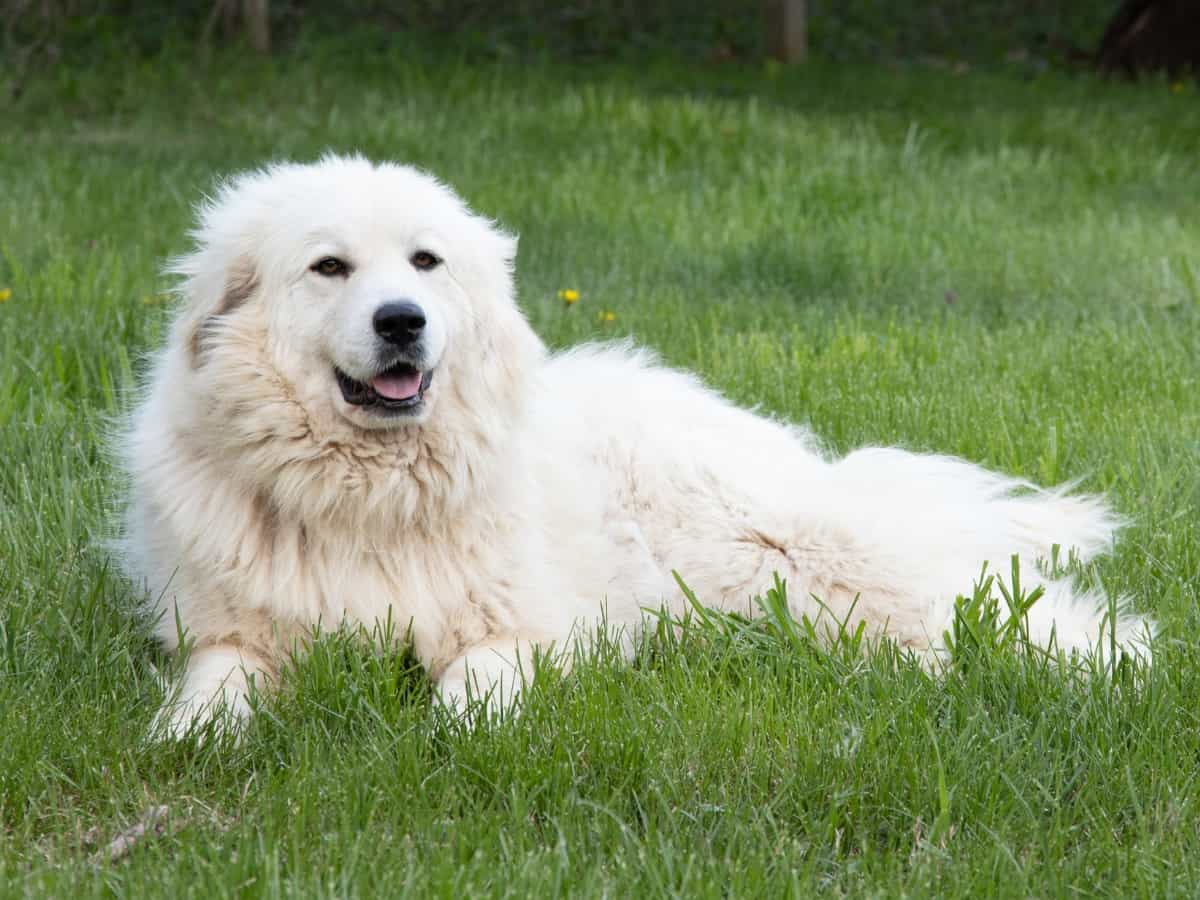
Here’s a look at the Great Pyrenees’ pros and cons and what you can expect from owning one of these beautiful dogs. Let’s get to it!
Great Pyrenees Pros and Cons
There are good and bad things about owning a Great Pyrenees – as there are with all dog breeds. A potential owner of one of these dogs needs to consider both sides before getting one from a breeder or a rescue.
The following is a more in-depth look at what makes the Great Pyrenees a wonderful companion animal and the aspects of the breed that need to be compensated for as a handler and owner.
Here’s a tabled view of the pros and cons of the Great Pyrenees.
| Great Pyrenees Pros | Great Pyrenees Cons |
|---|---|
| Great Pyrenees are excellent guard dogs | Great Pyrenees barks a lot |
| Great Pyrenees are stunning looking | Great Pyrenees have a high prey drive |
| Great Pyrenees are loving and affectionate | Great Pyrenees need a lot of space |
| Great Pyrenees require little grooming | Great Pyrenees are heavy shedders |
| Great Pyrenees are easy to train and intelligent | Great Pyrenees are stubborn and independent |
| Great Pyrenees love children | Great Pyrenees are high energy |
| Great Pyrenees make good therapy dogs | Great Pyrenees are prone to hip dysplasia |
Generally, Great Pyrenees are family-focused dogs, and they look to their owners for direction. However, they’re independent when it comes to doing their job of protecting but are always mindful of recall.
So, let’s dive into their advantages first.
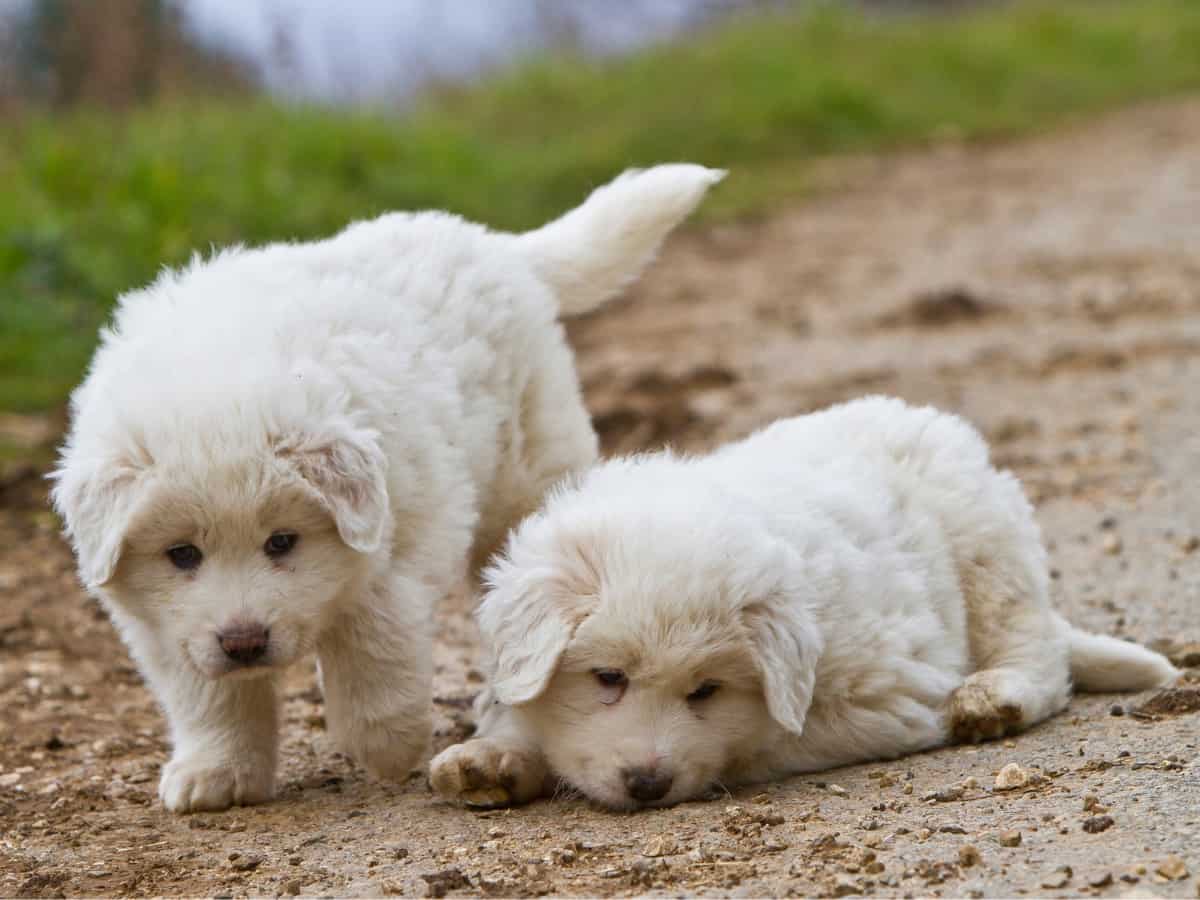
Great Pyrenees Pros
The Great Pyrenees are wonderful companion animals, highly trainable, and love having a job. The temperament of a Great Pyrenees is calm and steady, but they don’t hesitate to take action against a threat when detected.
They can be as tall as 32 inches at the shoulder and easily reach 100 pounds and more in weight. Although Great Pyrenees are large dogs, they are nimble, athletic, and strong without being overpowering.
See also: 11 Reasons Why Great Pyrenees Are Good Dogs
The breed has a reputation for being happy as a couch potato, relatively low maintenance in terms of care and grooming, and attractive with its silky long hair and coloring.
They’re great companion animals and aren’t overly demanding in terms of needing attention. They prefer to be at their owner’s side when asked and are content to relax and do their own thing when not called upon for activities.
An adult Great Pyrenees is a calm and patient individual, one that’s happy to accompany its family on walks and engage in play. While this is an attractive trait, it can be a bit of a negative as well.
Let me explain…
Their protective instinct is strong; they may bark or charge if they feel their family members are getting too rough. The breed prefers to maintain a low-key and calm demeanor while staying alert for potential threats.
The Pyrenean Mountain Dog, while being a great family guardian, is a natural for guarding livestock. You can leave a Great Pyrenees outdoors to watch a chicken coop or farm animals and expect it to stay at its post until it’s called in for the day.
“I find it fascinating how herding dogs keep their traits. My dog will ‘herd’ me by nipping at my heels when she wants to control my movement – generally when she wants me to continue playing.”
World of Dogz
The guarding and patience traits mean they’re comfortable staying indoors and being mellow, provided they’ve had enough exercise. An individual dog is more likely to go find a place to relax and sleep when “off-duty” than look for engagement.
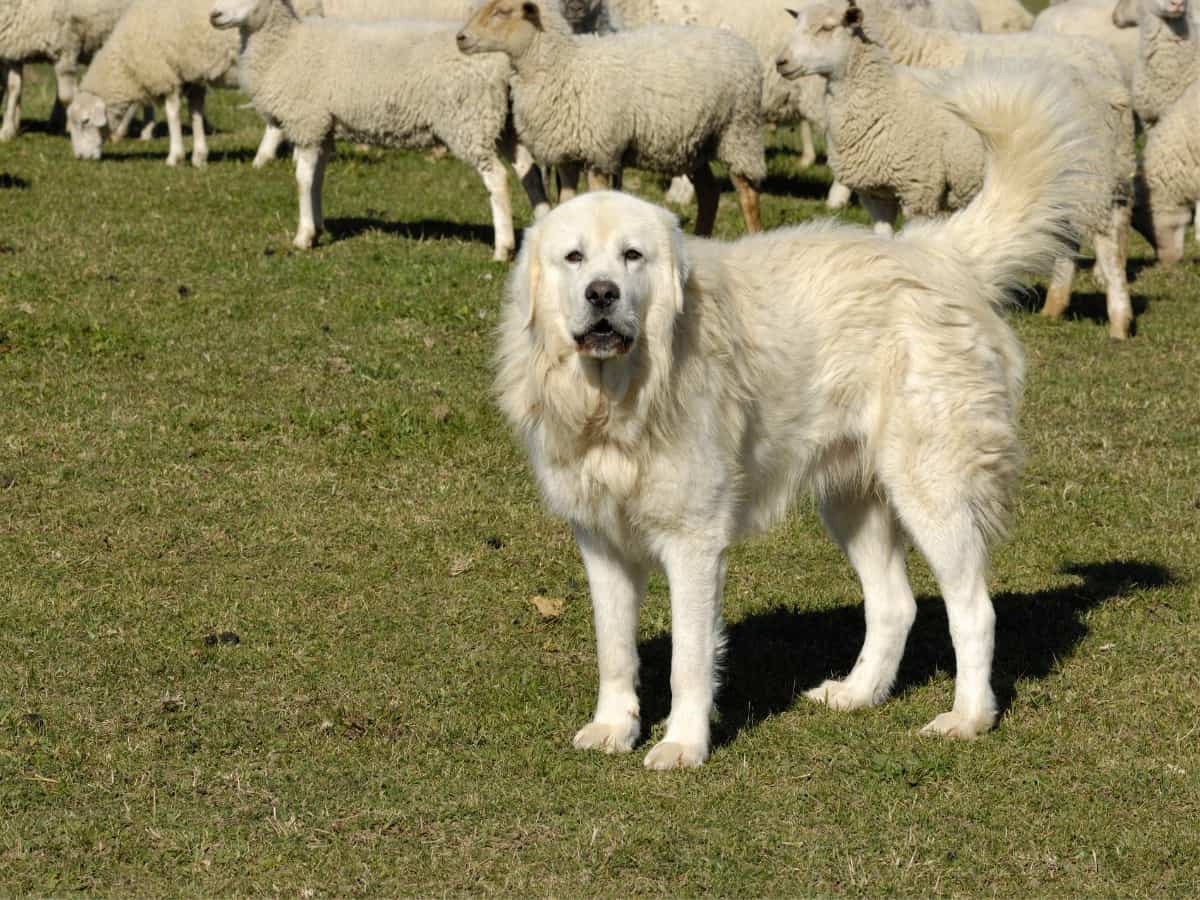
A Great Pyrenees is an excellent companion for someone who wants to enjoy a large breed dog that’s energetic when called upon but is otherwise happy to chill and keep their owner company.
Watch This Video on The Pros & Cons of Owning a Great Pyrenees…
Great Pyrenees Cons
The Great Pyrenees has been bred for centuries to be a working dog. Its size and temperament mean it’s not suited for life in an urban environment and does better living in a setting with lot of room for activities and exercise.
The temperament issue can cause confusion because the breed is known for its patience and laid-back attitude. The fact is the Great Pyrenees needs stimulation and activity, and it has a propensity to be aggressive with unknown dogs and other animals.
That’s not to say that keeping a Great Pyrenees in an urban environment is impossible. However, it requires an owner to be vigilant when exercising with their dog and keep an eye out for changes in behavior.
This breed is very loyal and protective of its owner, and while this is a positive trait, it can also be a negative one when it comes to socializing with other people and their dogs.
The inherent strength of the breed can make it difficult for inexperienced owners to handle. It’s important to instill proper behavior and recall during the puppyhood period in order to have an adult that’s respectful and responsive to commands.
The fact the Great Pyrenees has a double coat means it’s not going to do well in hotter temperatures. The breed was developed to tolerate staying out in the cold for hours at a time in order to guard livestock.
Its double-coated nature allows it to handle the extreme cold and not be affected by blowing winds and snow. As a general rule, the breed is best suited for regions that experience a full four seasons for its comfort.
The dogs can also tolerate living in regions with moderate temperatures year-round but not in areas where heat is a daily occurrence.
Double-coated dogs are also high shedding, so although little grooming is required, they do need regular brushing, especially in the spring and fall when they shed their undercoat.
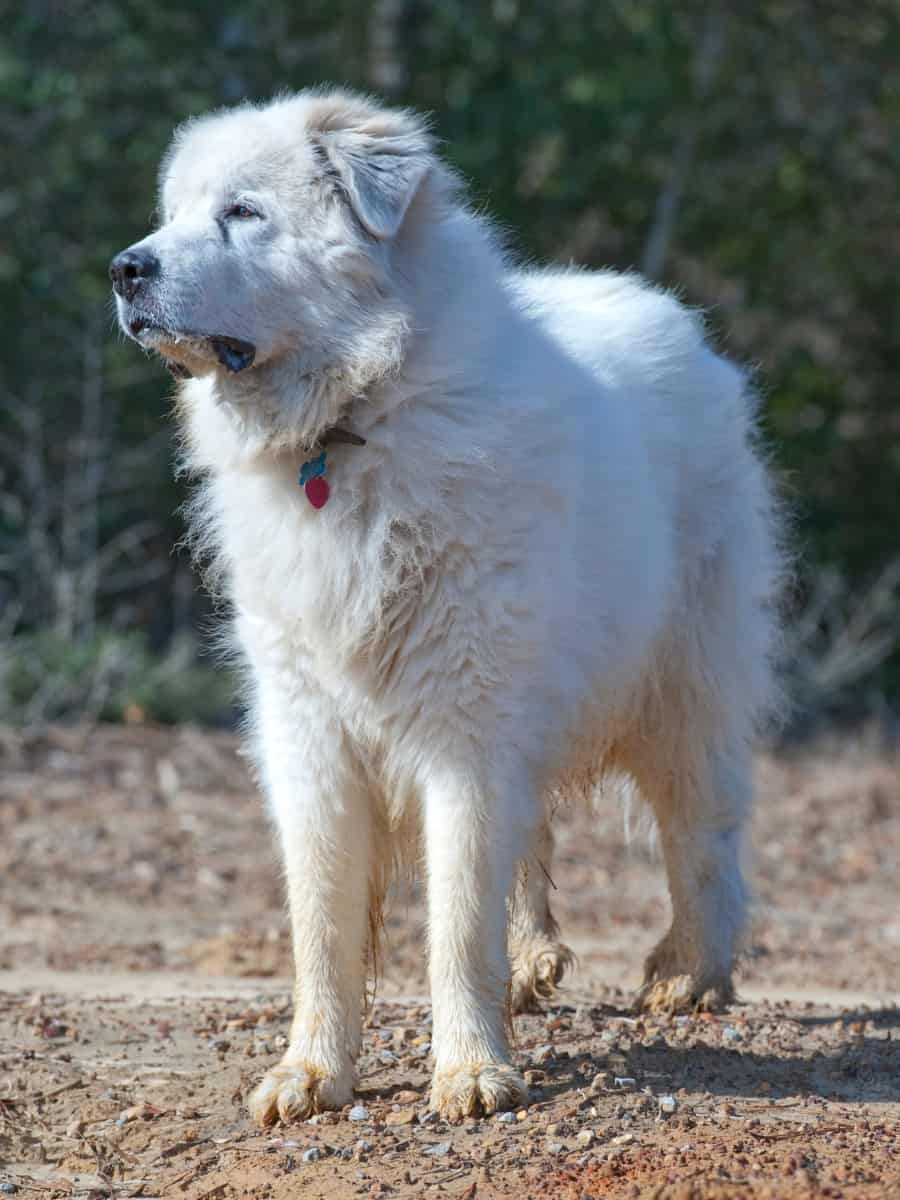
Physical Traits of the Great Pyrenees
The Great Pyrenees is a large breed but tends to be slender and muscular instead of thick and bulky. Their heads have an appearance that’s similar to a Labrador Retriever in shape, although it’s larger, and the ears are covered with medium-length hair.
Their tail tends to reach to their lower leg and has a feathery appearance. The eyes are always brown and the nose can be black or brown.
They have a double hair coat with the outer coat being long and coarse, giving the breed its signature appearance. The outer coat can be straight or wavy, or both depending on grooming. The undercoat is shorter in length, with the hair texture feeling soft and silky to the touch.
Base coat colors for the breed range from snow white to cream and darker colored patches are common. The patches can be anywhere on the body and be tan, gray, or reddish-brown.
Regular grooming is essential to help a dog with hair coat maintenance. Long-haired dogs are at risk of developing mats, and the Great Pyrenees is no exception.
Fortunately, the silky texture of the coat means grooming is as easy as running a brush through their coat regularly. Regular visits to the groomer is a good idea as it helps them shed their undercoat in warm weather for comfort and gets ahead of the development of mats.
Learn More About The Great Pyrenees In This Video…
Differences Between Males and Females
The male and female Great Pyrenees are both large dogs, but the male is almost always larger than the female. There are slight differences in the physical traits of the male and female, but you’ll be hard-pressed to determine the sex of the Great Pyrenees at first glance. Here’s a look at their physical differences.
Male
The male Great Pyrenees weighs between 100 to 160 pounds and reaches between 27 to 32 inches tall at the shoulder upon full maturity.
Female
The female Great Pyrenees weighs between 85 to 110 pounds. Her average height is anywhere between 25 to 29 inches upon reaching full maturity.
Temperament and Trainability of the Great Pyr
Great Pyrenees are known for being people pleasers and are easily trained to do a task. They like having a job, which means it’s important to give them regular exercise and mental stimulation.
A bored Great Pyrenees can become destructive – something owners want to avoid when taking into consideration the size of the breed. A Great Pyrenees can make quick work of whatever it is they decide to use as a boredom breaker.
The breed has been developed to be somewhat independent of its owner and has a mildly suspicious nature. This is considered an asset to the breed as they’re used for guarding livestock and have the instinct to scan the area for predators.
A good guard dog needs these traits as it enables them to make the decision to leave their post and go after predators that would attack the flock. The breed is also known for its patience and medium energy levels – traits that aid them in their guard dog duties.
This independence and suspicion are applied primarily to predators and threats as the Great Pyrenees are bred to be human-centric and listen to their handlers.
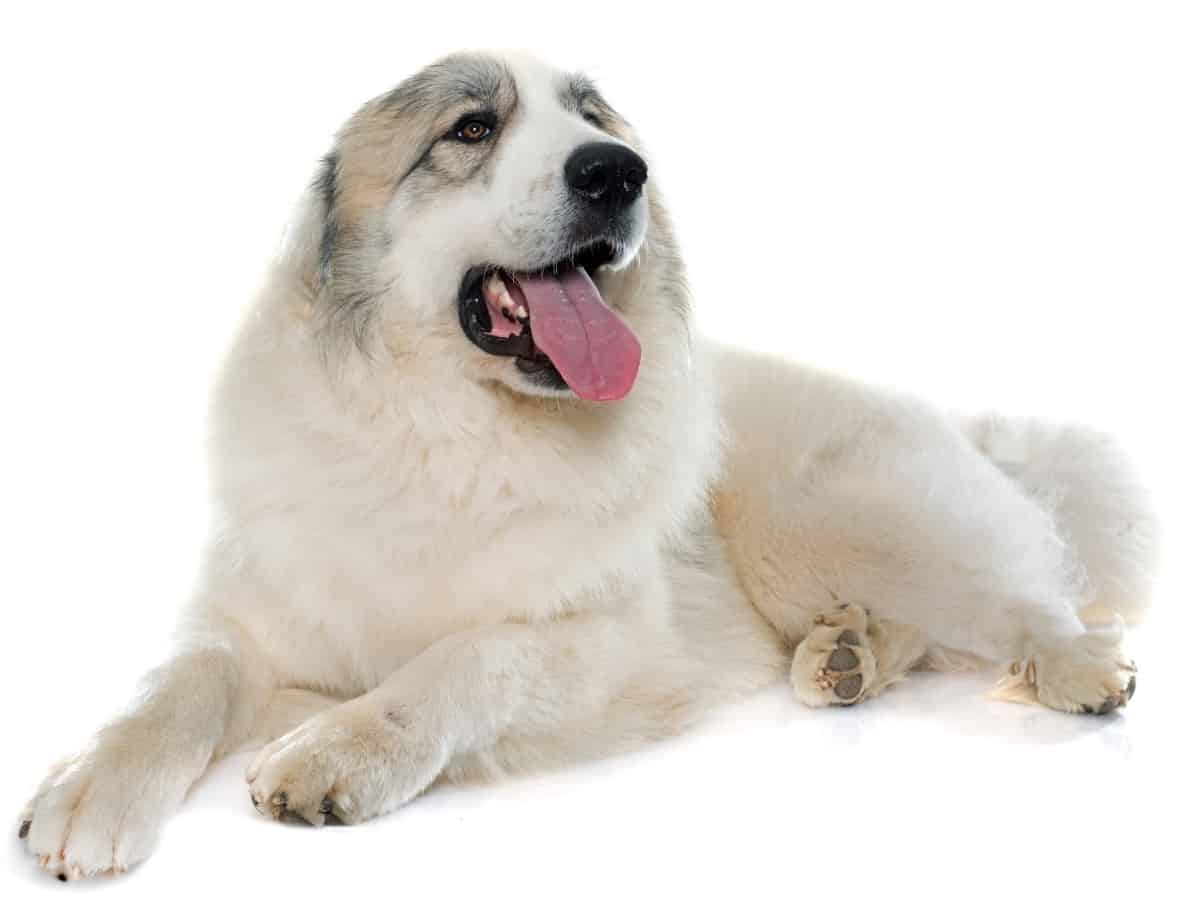
It’s worth noting that when a Great Pyrenees goes after a target, it may not return to the handler until they’re satisfied that it removed the threat. They’re not necessarily aggressive so much as they know their responsibilities to their charges.
However, even though the Great Pyrenees aren’t necessarily an aggressive breed, they are prone to acts of aggression when their instinct triggers them. They won’t attack the people or animals they’re assigned to protect, but they will go after anything they consider a threat.
A Great Pyrenees needs to be trained not to attack other animals, and a handler needs to be firm and repetitive in teaching an individual what it can and can’t do.
Training a Great Pyrenees tends to be straightforward as they’re easily focused on learning their job duties. They do respond well to commands and like the feeling of having a purpose.
The breed is not recommended for novice dog owners due to their need for independence and tendency to be aggressive at random.
Common Health Issues of the Great Pyrenees
The Great Pyrenees is a large breed, so they’re at risk of musculoskeletal conditions commonly found in larger dogs. Ethical breeders do their best to keep these issues from showing up, but it’s not always possible as an individual will develop the conditions regardless of genetics.
I can certainly speak for this as, despite all the genetic testing and choosing a top breeder, my dog has spinal arthritis and slight hip dysplasia.
The common health issues of the Great Pyrenees include:
- Elbow dysplasia
- Hip dysplasia
- Eye disorders
- Neurological disorders
- Immune disorders
- Cancer
- Arthritis
- Bloat*
Breeders of Great Pyrenees typically have the puppies checked and evaluated for the potential to develop hip and elbow dysplasia before selling a puppy to its owner.
If you decide this dog is for you, I recommend getting an orthopedic bed such as the Big Barker, which is the only dog bed clinically proven to prevent and reduce joint problems in large breeds. It’s the bed my dog has; we both rest easy at night, and it even comes with a 10-year guarantee.
*The risk of bloat in the Great Pyrenees is high, and the AKC advises all breed owners to learn about the signs of bloat to take quick action if an incident occurs.
Health Maintenance for Quality of Life of a Great Pyrenees
Outside of these issues, the breed is robust and hardy. Regular veterinary visits help owners stay ahead of adverse health conditions and ensure that the individual dog can live its best life.
It’s advisable to start regular veterinary visits as soon as possible after getting a Great Pyrenees puppy or adult due to the inherent issues of a large breed of dog. Arthritis is a common issue with large breeds, and the Great Pyrenees is likely to deal with the condition as it ages.
Let’s Wrap This Up!
The Great Pyrenees is a large guard dog breed that’s more laid-back than other breeds of this type. It’s a large dog that’s been developed to be focused on watching for predators as opposed to actively guarding a perimeter.
They’re patient, loving, affectionate, and quiet, although they do have a loud bark. Experienced dog owners who understand that they need to keep an eye on their individual and the requirements of owning a large dog that needs stimulation will do well with owning a Great Pyrenees.





